The Motorola Atrix 4G Preview
by Anand Lal Shimpi on February 13, 2011 3:18 AM ESTHardware Impressions: Run of the Mill Motorola, aka Good Build Quality
The last Motorola phone I owned was the v70. Brian handled all of the 2nd generation Droid reviews, and while I've used them I never did so for an appreciable period of time. From the StarTAC to the v70, I will say I had some good experiences with Motorola hardware.
The Atrix 4G is no different. The phone is pretty light at 135 grams, that puts it in the class of the iPhone 4 and Optimus 2X (although the Atrix is lighter than both). Despite its weight, the Atrix 4G doesn't feel cheap - it just feels like a solid block of plastic. There's no discernible flex in the chassis, at least from my experience with the phone thus far. All gaps in the housing are both tiny and uniform. It's a well built product.
On the front is the 4.0" qHD PenTile LCD screen (960 x 540 resolution). At the top of the display is the front facing VGA camera, proximity sensors and notification LED. The LED is green when the Atrix 4G is plugged in and fully charged, it turns red when you are running low on battery and blinks green for all notification events.
Along the bottom of the screen are the four Android buttons, all capacitive. The ordering is identical to the Droid X and LG Optimus 2X with the contextual menu coming first, followed by home, back and search in that order.
Along the right edge of the phone is easily one of the best feeling volume rockers I've ever used. The rocker itself is plastic but with very little play, it feels solid and stationary. Each click, up and down, is perfectly distinct. It's a good quality feeling button.
This is a Tegra 2 phone and thus the left edge has both a microUSB port for charging and a micro HDMI type D port for video output. The two ports are similarly sized and placed close enough together that I always worry about jamming a USB cable into the micro HDMI port. Don't you hate when that happens? Like the LG Optimus 2X, Motorola bundles a ~6 foot micro HDMI to HDMI type A cable with the phone.
The power/lock button is in a unique location on the Atrix 4G. It's angled between the top and rear planes of the phone.
The button's location is unusual at first but I must say it's pretty easy to get used to and after a few days I didn't have any complaints about it. It's not as easy to fumble around with in your pocket than a conventional top mounted switch, but it works and it keeps the outer rim of the phone pretty clean.
The phone's 1/8" jack is located up top. There's a small slit for the primary microphone on the face of the phone. The speakerphone and noise canceling mic input are both located around the back.
The back cover is a thin piece of plastic with a carbon fiber-like pattern printed on it. It's a pretty classy design and the back cover, like the rest of the phone, doesn't feel cheap.
Motorola integrates a 5MP rear facing camera with LED flash on the back of the phone. The camera doesn't protrude beyond the back cover, instead it's recessed by a approximately 1mm.
A side effect of Motorola's tightly assembled design is that there's no notch to jam your fingernail in to easily remove the back cover. You have to instead do a bit of prying at the bottom before you can get enough room to really pull the thing off.
There are snaps located on both sides of the back cover, the top and the bottom just cup around the phone chassis to hold itself in place.
Inside the Atrix 4G is a very large ~7.0Whr battery. Motorola rates it between 1880mAh and 1930mAh. This is actually the first time I've seen a variable rating printed on a smartphone battery.
Like the Optimus 2X, the Atrix 4G's microSD slot is accessible without removing the battery. You do need to take out the battery to get to the SIM slot however. The Atrix 4G ships with 16GB of on-board NAND, so the microSD slot remains unpopulated by default. Of that 16GB only 14GB is available to Android (and of that ~11GB is for media storage). The remaining 2GB is presumably used for Motorola's webtop Linux environment. I managed to copy to the Atrix 4G's internal NAND at a peak of 10.5MB/s over USB.
| Physical Comparison | |||||||||
| Apple iPhone 4 | Motorola Droid 2 | Google Nexus S | LG Optimus 2X | Motorola Atrix 4G | |||||
| Height | 115.2 mm (4.5") | 116.3 mm (4.6") | 123.9 mm (4.88") | 123.9 mm (4.87") | 117.8mm | ||||
| Width | 58.6 mm (2.31") | 60.5 mm (2.4") | 63.0 mm (2.48") | 63.2 mm (2.48") | 63.5mm | ||||
| Depth | 9.3 mm ( 0.37") | 13.7 mm (0.54") | 10.88 mm (0.43") | 10.9 mm (0.43") | 10.95mm | ||||
| Weight | 137 g (4.8 oz) | 169 g (5.9 oz) | 129 grams (4.6 oz) | 139.0 grams (4.90 oz) | 135.0 grams | ||||
| CPU | Apple A4 @ ~800MHz | Texas Instruments OMAP 3630 @ 1 GHz | 1 GHz Samsung Hummingbird | NVIDIA Tegra 2 Dual-Core Cortex-A9 (AP20H) @ 1 GHz | NVIDIA Tegra 2 Dual-Core Cortex-A9 (AP20H) @ 1 GHz | ||||
| GPU | PowerVR SGX 535 | PowerVR SGX 530 | PowerVR SGX 540 | ULV GeForce @ 100-300 MHz | ULV GeForce @ 100-300 MHz | ||||
| RAM | 512MB LPDDR1 (?) | 512 MB LPDDR1 | 512 MB LPDDR1 | 512 MB LPDDR2 @ 600 MHz data rate | 1024 MB LPDDR2 @ 600 MHz data rate | ||||
| NAND | 16GB or 32GB integrated | 8 GB integrated, preinstalled 8 GB microSD | 16 GB Integrated | 8 GB integrated (5.51 GB internal SD, 1.12 phone storage), up to 32 microSD | 16 GB integrated, up to 32 microSD | ||||
| Camera | 5MP with LED Flash + Front Facing Camera | 5 MP with dual LED flash and autofocus | 5 MP with Autofocus, LED Flash, VGA front facing, 720P Video | 8 MP with autofocus, LED flash, 1080p24 video recording, 1.3 MP front facing | 5 MP with autofocus, LED flash, 720p video recording, VGA MP front facing | ||||
| Screen | 3.5" 640 x 960 LED backlit LCD | 3.7" 854 x 480 | 4" Super AMOLED 800 x 480 | 4" Super AMOLED 800 x 480 |
4" PenTile LCD 960 x 540 |
||||
I should mention that the name Atrix 4G refers to the fact that the phone supports HSPA+, not because it is an LTE device. I've only done a limited amount of network performance testing but so far I've peaked at 3.1Mbps down and 938Kbps up. Average performance in Raleigh, NC seems to be in the 1 - 3Mbps range downstream. My upstream performance has been limited to a UMTS-like 300Kbps, however I need more time to figure out why I'm not getting consistently higher upload speeds on the Atrix.


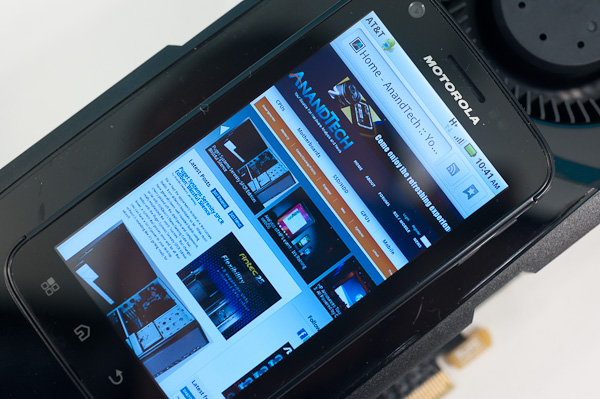
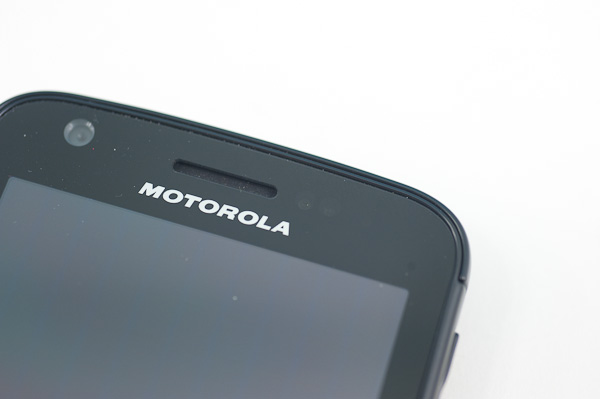
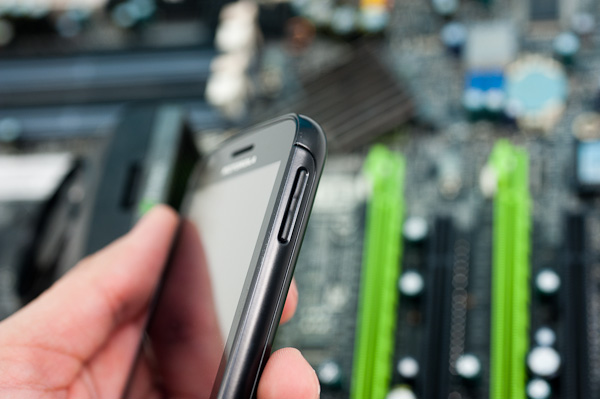
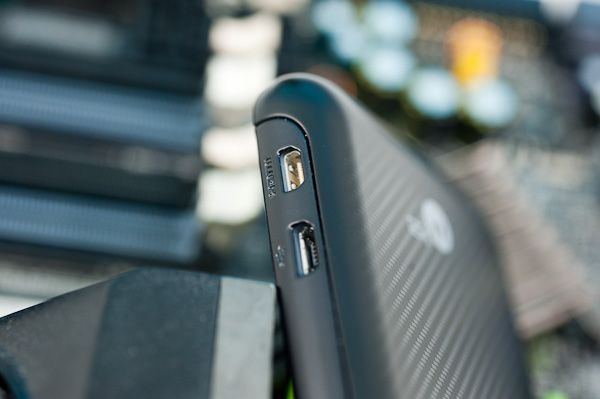
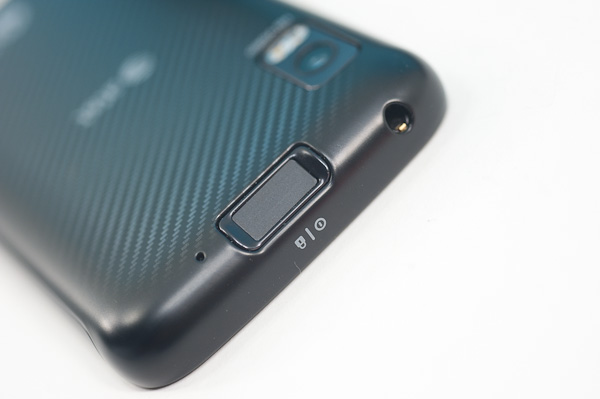

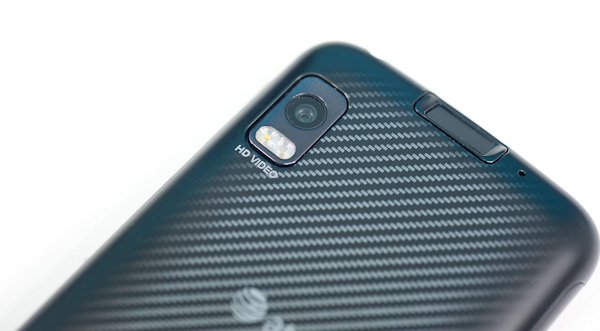
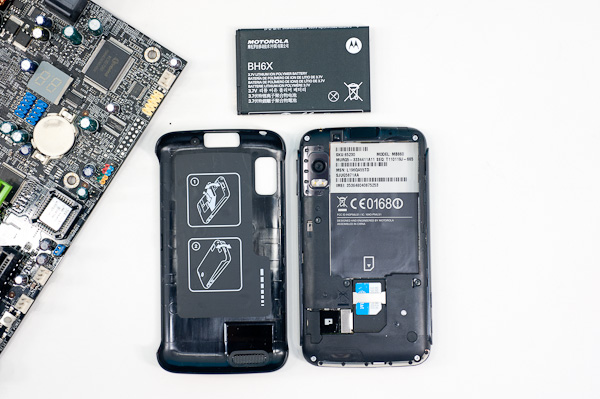








41 Comments
View All Comments
xaml - Tuesday, February 15, 2011 - link
But can it run Crysis?Weedkillers2 - Wednesday, February 16, 2011 - link
HiyaDue to initial reviews iv read the concept of the dock / webtop is good but its a bit slow...
Mabye it would be in Motorola's interest to create an Overcloking Application when the device is running off external Power such as
The Laptop Dock or the HD Dock
this would boost its peformance when mains connected and make the device more appealing in thouse situations to no realy change of the product required.
(obviously use at own risk feture or atleast different levels of over clok use at own risk)
Dylan
synaesthetic - Wednesday, February 16, 2011 - link
Until smartphones have modular and universal OS capability, they won't replace computers.When you can just hop over to Google's website and download a new, universal version of Android, and then hop on over to Motorola's website to download your device's appropriate drivers, THAT will be the moment that smartphones can truly attempt to replace PCs in the mainstream market.
Until that happens, walled-garden systems, lack of speedy updates and OS fragmentation will keep them in their current niche.
Oh, and they should *ship* with root access easily enabled, just like a computer. No exploits or hacks required, a simple flipping of a switch in the OS to enable superuser permissions.
TareX - Thursday, February 17, 2011 - link
Can Ananad (or anyone who held the phone) tell me how bad the text "fuzziness" was in the browser, on a zoomed out view? Some reviews said it appeared "pixelated" and unreadable despite of the qHD screen.EMM81 - Saturday, February 19, 2011 - link
Anand can you give some more detailed impression/images of the Atrix screen. If it really is a pentile matrix it would be an RGBW scheme. This is unfortunate because it is basically like adding a white sub pixel to the existing red, green, and blue sub pixels and calling it twice the resolution. So by my calculation the screen is really ~679x382 if you considered RGBW as one pixel. I would assume that the impression of this screen would therefore be that of a lower resolution than 800x480 and theoretically the white sub pixels would allow it to either be brighter when displaying non color saturated images or to lower the back light and save power. Since your graph clearly shows a lower contrast ratio the only possibility is power savings at the expense of quality. PLEASE correct me if I am wrong but this does seem to be the case.DisplayGeek - Tuesday, February 22, 2011 - link
You are indeed wrong and here's why:http://www.nouvoyance.com/files/pdf/measuring-pent...
Counting the number of subpixels, when using a system that uses both subpixel rendering and metamer rendering (where one uses the fact that white can be produced by both a single W and the combination of RGB) allows the display to use only two subpixels per pixel *on average*.
Yes, the RGBW system allows the power to be cut roughly in half.
The full on white to full off black contrast ratio is dependent upon the LCD technology itself, how much light leakage occurs in the dark states. It has nothing to do with the subpixel arrangement or color filter system, or its mode of operation. Though, the Dynamic Backlight Control does improve the contrast when dark images are shown, as reducing the backlight brightness makes the darkest states darker, while maintaining the brightness of the intermediate grey states. But that wasn't tested here.
arth2910 - Monday, February 21, 2011 - link
The Meizu M9 actually has the highest resolution of available android smartphones (matching that of the iPhone 4's). Acer's Iconia Smart also appears to be touting 1024x480.eawortman - Friday, March 4, 2011 - link
Is there still a full review coming?santro652 - Saturday, March 5, 2011 - link
Hi Anand,I am planning to get the Atrix carrier free version from USA, can anyone tell me if this phone will work in India or is there any unlocking required after taking a carrier free version. Please. Thanks in advance.. If anyone else knows the reply please let me know ASAP, Please
Kawboy12R - Thursday, April 28, 2011 - link
Looks like the full review got derailed somehow. I'd love to see some AT reviewage though.